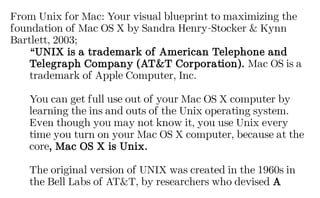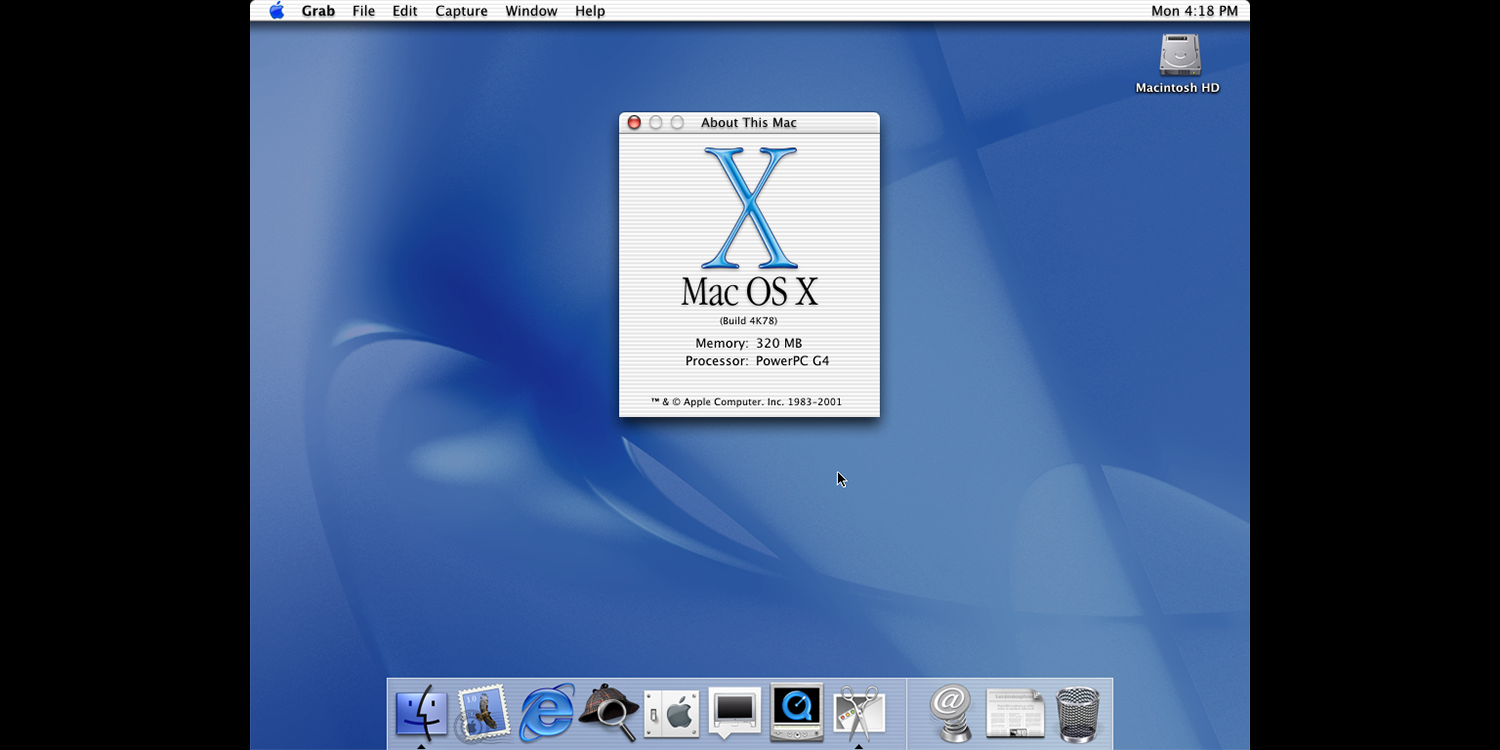
In this case, we are calling the ld command and passing in a few arguments. Plest case several object files are given, and ld combines them, pro-ĭucing an object file which can either be executed or become the input Resolving external references, and searching libraries. The ld command combines several Mach-O (Mach object) files into one byĬombining like sections in like segments from all the object files,
#Learn unix on mac os x mac os x
We now need to call the Linker to make an executable out of our object file, the only flags I found to be working under Mac OS X are the following ones: If everything assembled successfully, we can see a file named hello.o. Which basically says, assemble my hello.asm file into an intermediate object file (eventually named hello.o) by using the Mach output format.

#Learn unix on mac os x code
To assemble this code and output an object file we need to call NASM with this command: Mov eax, 0x1 system call number (sys_exit) Mov eax, 0x4 system call number (sys_write) _syscall: declaring a kernel call function Msg db "Hello, World!",0xa string with a carriage-return Global _start make the main function externally visible A simple and classic ‘Hello, World’ example using FreeBSD NASM Assembly is shown below:
#Learn unix on mac os x software
FreeBSD is yet another flavor of Unix, again based on top of the BSD kernel, or exactly a descended from AT&T UNIX via the Berkeley Software Distribution (BSD) branch through the 386BSD and 4.4BSD operating systems. The right system calls I found are used for the FreeBSD Unix distribution available freely online. Or it will silently run the application which will not display our desired output, but instead it returns the control to the kernel, displaying just a blank line at the terminal. So basically if we try to assemble the code using the Windows / Linux system calls, the assembler will not complain, the linker neither, although when we try to run the executable, the OS might output an error message, it displays a: Bad system call! The main difference is that Mac OS X is based on the Mach kernel which is derived from the BSD implementation of Unix in NEXTSTEP.

The main problem I found when programming in NASM Assembly is the difference in the system calls between NASM under Linux or Windows and NASM under certain flavors of Unix / Mac OS X. If you have got Xcode installed, just open your terminal and type: nasm -vĪs the statement clearly shows, this command makes sure you have got NASM installed on your machine and even what version you have got running. NASM and the syntax are well documented and even Apple offers a documentation page for NASM. NASM comes pre-installed with the programming tools found on the Mac OS X installation disk, together with Xcode and WebObjects.


I wanted to try something different, a cross-platform solution similar to GAS but with a different syntax, I opted for The Netwide Assembler, or better known as NASM. Uli Kusterer‘s article got me started originally, even though his article explains Assembly programming by using the GNU C Compiler (GCC) and therefore the AT&T assembler syntax. Programming in Assembly on Mac OS X can be tricky because not quite well documented. I am back after having ironed out some of the crinkles left in the design and fixed some internal links, anyway back on track, today I would like to talk about programming on Mac OS X using the x86 (80386) Assembly language.


 0 kommentar(er)
0 kommentar(er)
